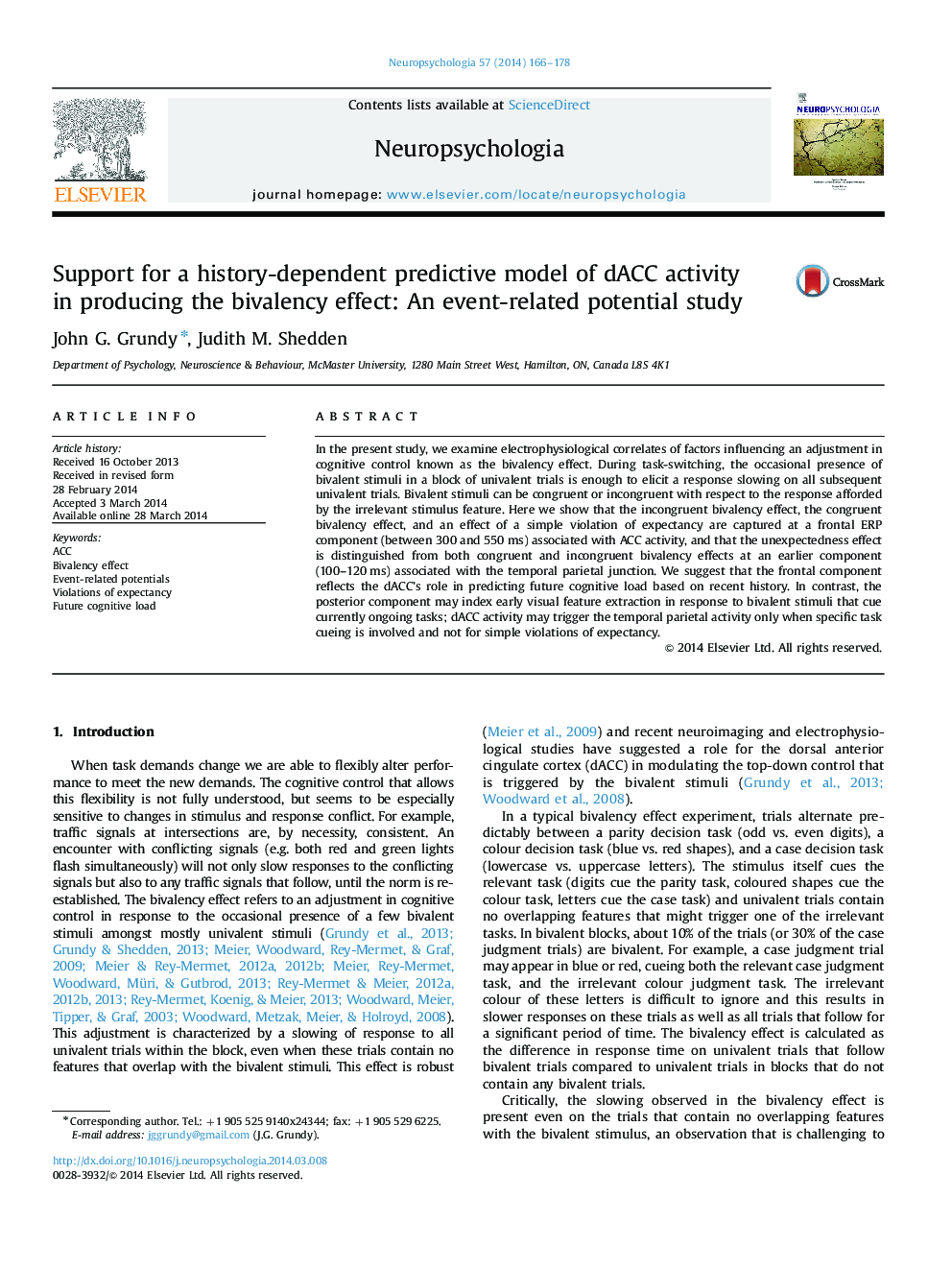| Article ID | Journal | Published Year | Pages | File Type |
|---|---|---|---|---|
| 7321483 | Neuropsychologia | 2014 | 13 Pages |
Abstract
In the present study, we examine electrophysiological correlates of factors influencing an adjustment in cognitive control known as the bivalency effect. During task-switching, the occasional presence of bivalent stimuli in a block of univalent trials is enough to elicit a response slowing on all subsequent univalent trials. Bivalent stimuli can be congruent or incongruent with respect to the response afforded by the irrelevant stimulus feature. Here we show that the incongruent bivalency effect, the congruent bivalency effect, and an effect of a simple violation of expectancy are captured at a frontal ERP component (between 300 and 550Â ms) associated with ACC activity, and that the unexpectedness effect is distinguished from both congruent and incongruent bivalency effects at an earlier component (100-120Â ms) associated with the temporal parietal junction. We suggest that the frontal component reflects the dACC's role in predicting future cognitive load based on recent history. In contrast, the posterior component may index early visual feature extraction in response to bivalent stimuli that cue currently ongoing tasks; dACC activity may trigger the temporal parietal activity only when specific task cueing is involved and not for simple violations of expectancy.
Keywords
Related Topics
Life Sciences
Neuroscience
Behavioral Neuroscience
Authors
John G. Grundy, Judith M. Shedden,
